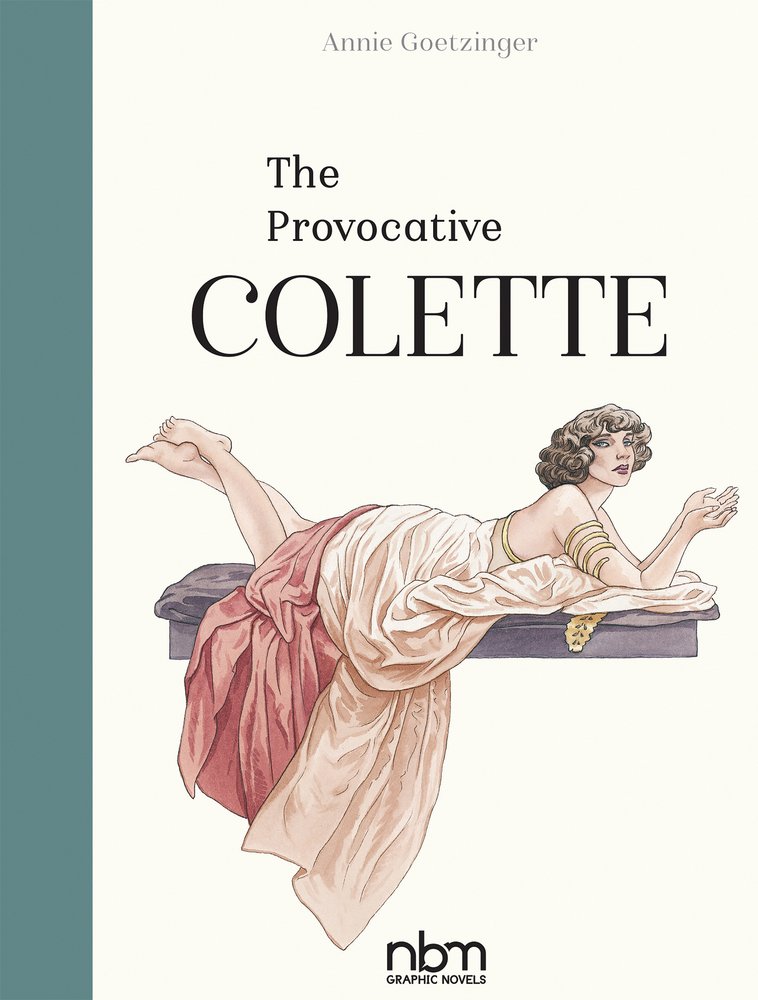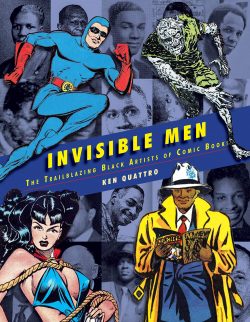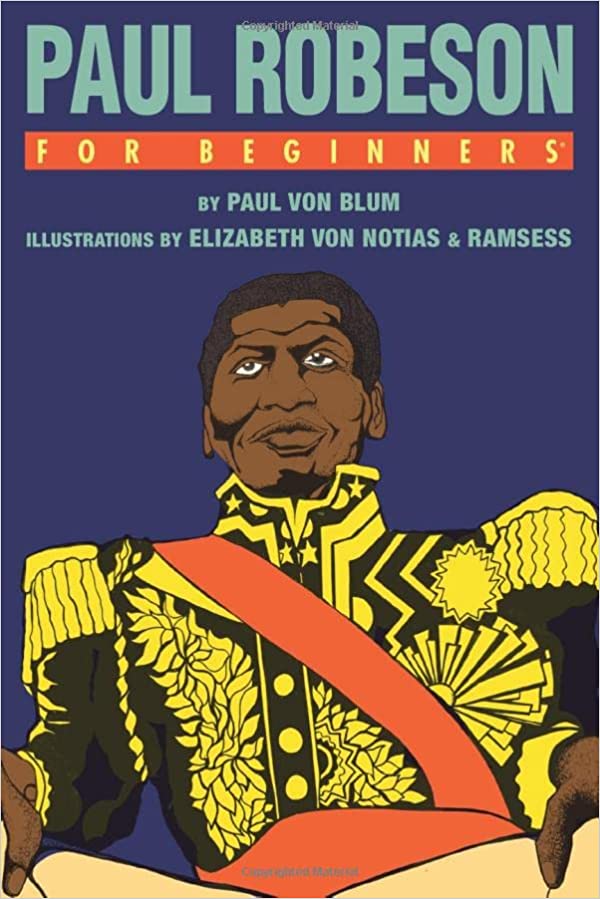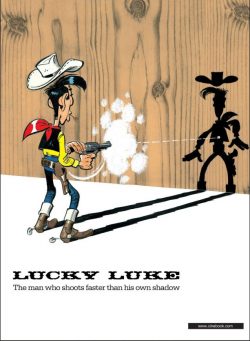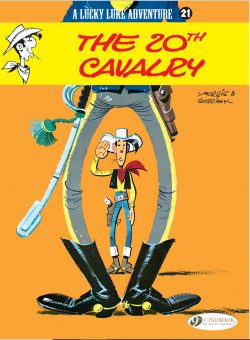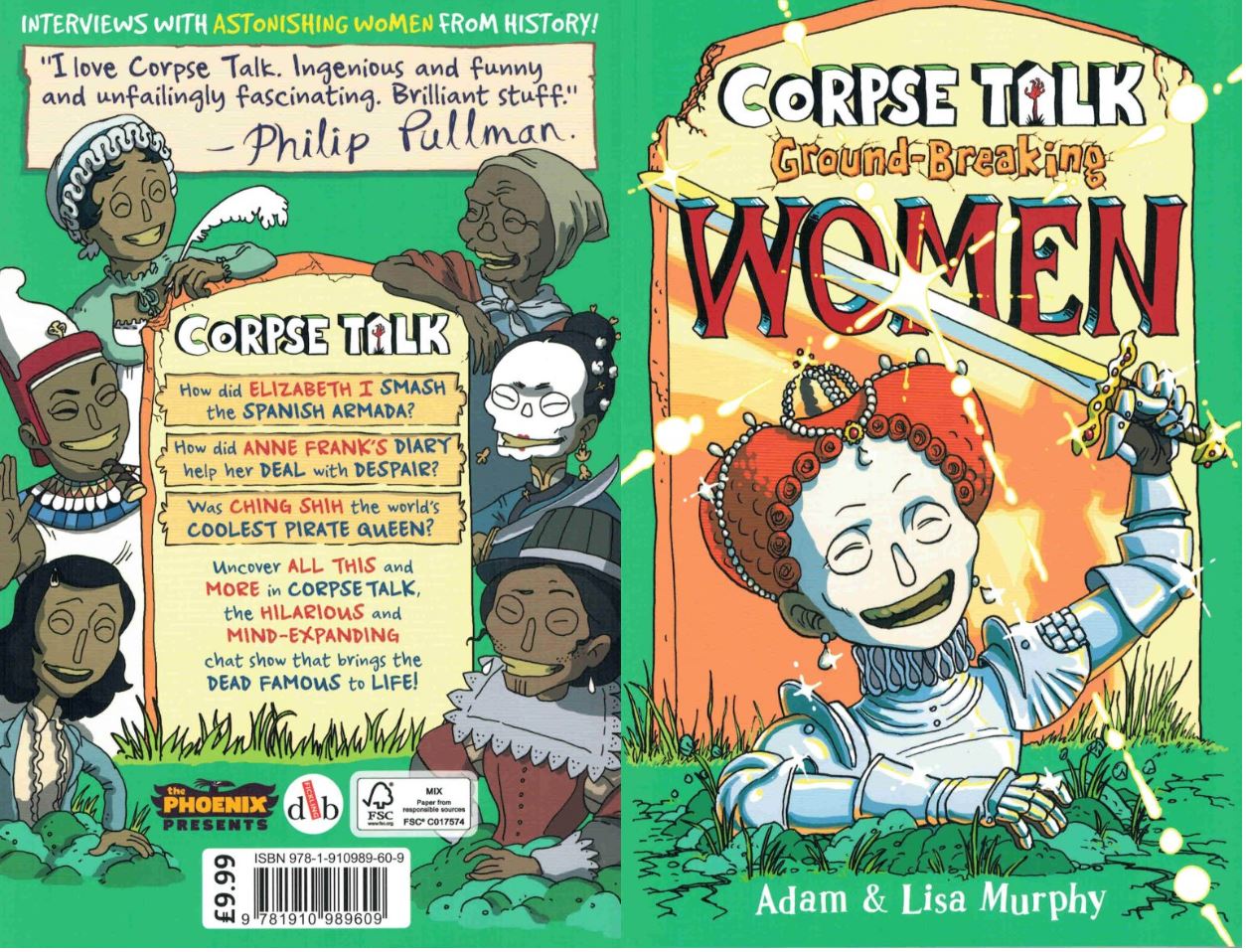
By Adam & Lisa Murphy (David Fickling Books)
ISBN: 978-1-910989-60-9(Digest PB)
The educational power of comic strips has been long understood and acknowledged: if you can make the material memorably enjoyable, there is nothing that can’t be better taught with pictures. The obverse is also true: comics can make any topic or subject come alive… or at least – as in this delightful almanac of inspiration – outrageously, informatively undead…
The comical conceit at play in Corpse Talk is that your scribbling, cartooning host Adam Murphy (ably abetted off-camera by Lisa Murphy) digs up famous personages from the past: all serially exhumed for a chatty, cheeky This Was Your Life talk-show interview that – in Reithian terms – simultaneously “elucidates, educates and entertains”. It also often grosses one out, which is no bad thing for either a kids’ comic or a learning experience…
Another splendid release culled from the annals of British modern wonder The Phoenix (courtesy of those fine saviours of weekly comics at David Fickling Books) this collection -regrettably still unavailable in digital editions – quizzes a selection of famous, infamous and “why-aren’t-they-household names?” women from history, in what would probably be their own – post-mortem – words…
Be warned, as you absorb these hysterical histories, you may say to yourself again and again “but… that’s not FAIR…” over and over again.
Catching up in order of date of demise, our fact-loving host opens these candid cartoon conferences by digging the dirt with ‘Hatshepsut: Pharaoh 1507-1458 BCE’, tracing her reign and achievements …and why her name and face were literally erased from history for millennia.
As ever, each balmy biography is accompanied by a side feature examining some crucial aspect of their lives, such as here where ‘Temple Complex’ diligently details the controversial pharaoh’s astounding and colossal “Holy of Holies”: the Djeser-Djeseru Mortuary Temple of Hatshepsut.
‘Hypatia of Alexandria: Mathematician & Philosopher 360s-415’ sketches out the incredible accomplishments, appalling treatment and tragic fate of a brilliant teacher and number-cruncher, supplemented here by a smart lesson in the almost-mystical concept of ‘The Golden Ratio’.
Throughout all civilisations, (mostly male) historians have painted powerful women with extremely unsavoury reputations and nasty natures. Just this once, however, the facts seem to confirm that ‘Irene of Athens: Empress of Byzantium 752-803’ was every bit as bad as detractors described her. Her atrocious acts against friends, foes and her own son Constantine are offset in the attendant fact-feature ‘Spin Class’, revealing how Irene employed religious industrial espionage to break China’s millennial monopoly on silk production, and comes complete with a detailed breakdown of how the Byzantine silk trade worked…
Every comic reader or fantasy fan is familiar with the idea of women warriors, but a real-life prototype for them all was the great-granddaughter of Genghis Khan. ‘Khutulun: Wrestling Princess 1260-1300s’ refused to be married off unless a suitor could defeat her in the Mongolian grappling martial art Bökh. So effective a fighter, archer and strategist was she, that the Khan appointed her his Chief Military Advisor and even nominated her his successor on his deathbed – an honour and can of worms she wisely sidestepped to become a power behind the throne.
Her incredible account is backed-up by an in-depth peek into the ferocious wrestling style she dominated in ‘Mongolian Moves’, after which ‘Joan of Arc: Saint 1412-1431’ explains how it all went wrong for her in asks-&-answers feature ‘How Do You Become a Saint?’
On more traditional and familiar ground, ‘Elizabeth I: Queen of England 1533-1603’ recounts her glorious reign and explains the how and why of her power dressing signature appearance in ‘A Killer Look!’ whilst transplanted near-contemporary ‘Pocahontas: Powhattan Princess 1596-1617’ shares the true story of her life before ‘Sad Ending, Continued…’ discloses the ultimate fate of her tribe at the hands of English Settlers.
Another astonishing character you’ve presumably never heard of is ‘Julie D’Aubigny: Swashbuckler 1670-1707’. She was a hell-raising social misfit who scandalised and terrorised the hidebound French Aristocracy. Daughter of a fencing teacher, she fought duels, broke laws, travelled wherever she wanted to, enjoyed many lovers – male and female – and even sang with the Paris Opera (now that’s a movie biopic I want to see!). What else could she offer as a sidebar but a lesson on duelling for beginners in ‘Question of Honour’?
‘Granny Nanny: Resistance Fighter 1686-1755’ started life as an Ashanti Princess, taken to Jamaica as a slave. However, once there she organised the ragtag runaways known as Maroons into an army of liberation. The workings of her rainforest citadel Nanny Town (now Moore Town) are explored in ‘Fortresses of Freedom’ after which a more sedate battle against oppression is undertaken with the interrogation of ‘Jane Austen: Novelist 1775-1817’, complete with cartoon precis of her subversive masterpiece ‘Pride & Prejudice (The Corpse Talk Version)’…
‘Ching Shih: Pirate Queen 1775-1844’ tells of another woman who beat all the odds but has since faded from male memory: a young girl kidnapped by China Seas pirates who rose to become their leader. Ravaging the Imperial coast, the corsair created an unshakable pirate code that benefitted the poor, outsmarted the Chinese Emperor and ultimately negotiated a pardon for herself and all her men to live happily ever after!
That salty sea saga is accompanied by the lowdown and technical specs on ‘Punks in Junks’ and followed by another bad girl with a good reputation.
‘Princess Caraboo: Con-Artist 1791-1864’ was never the Malayan royal refugee British High Society was captivated by, but rather a Devonshire serving maid who made the most of outrageous fortune via her quick wits. Her story is backed up by a delightful opportunity to forge your own faux identity with ‘Caraboo’s Character Creation Course!’…
Far more potent and worthy exemplars, ‘Harriet Tubman: Abolitionist 1822-1913’ ferried more than 300 of her fellow slaves from Southern oppression to freedom in northern American states and what we now call Canada: supplemented here by a detailed breakdown of ‘The Underground Railway’ before emancipation martyr ‘Emily Wilding Davison: Suffragette 1872-1913’ shares her brief, troubled life and struggle to win women the right to vote and participatory roles in society. The history is backed up by an absolutely unmissable graphic synopsis of the long struggle in ‘A Brief History of Women’s Rights’…
Someone who made every use of those hard-won concessions was ‘Nellie Bly: Journalist 1864-1922’, whose sensational journalistic feats and headline-grabbing stunts made her as newsworthy as her many, many scoops. One of the most impressive was beating Jules Verne’s fictional miracle of modernity by voyaging for ‘72 Days Around the World’ – as seen in the gripping sidebar spread – whereas the career of ‘Amy Johnston: Aviator 1903-1941’ was cut tragically short by bad luck and male intractability. Her flying triumphs are celebrated through a fascinating tutorial on her preferred sky-chariot. The ‘De Havilland Gypsy Moth’.
The short, tragic life of ‘Anne Frank: Journalist 1864-1922’ follows, accompanied by a detailed breakdown of the secret hideout and necessary tactics employed to conceal Anne, her family and friends in ‘The Secret Annex’.
Closing on an emotional high note, the rags to riches/riches to rags to riches account of dancer, comedian, freedom fighter and social activist ‘Josephine Baker: Entertainer 1906-1975’ details the double rollercoaster life of a true star and ends this book on a big finish with her teaching the secrets of how to ‘Dance the Charleston’.
Clever, moving, irreverently funny and formidably factual throughout, Corpse Talk: Ground-Breaking Women cleverly yet unflinchingly handles history’s more tendentious moments: personalising the great, the grim and the good in ways certain to be unforgettable. It is also a fabulously fun read no parent or kid could possibly resist.
Don’t take my word for it though, just ask any reader, spiritualist or dearly departed go-getter…
Text and illustrations © Adam & Lisa Murphy 2018. All rights reserved.





